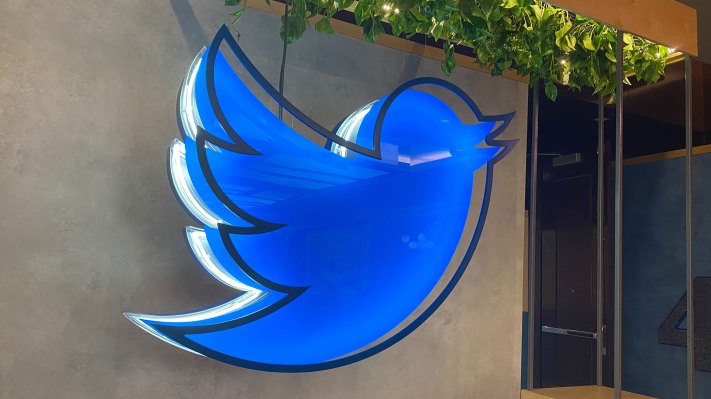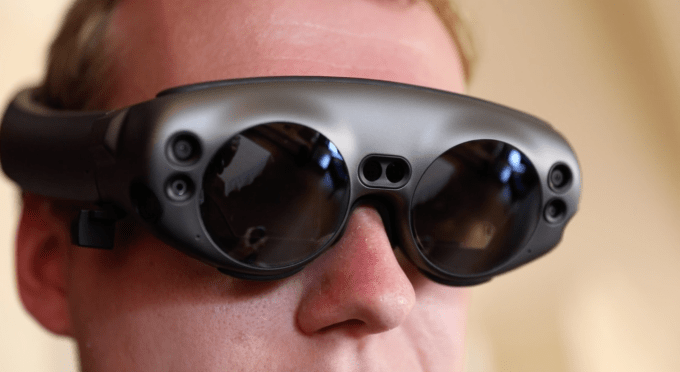Music
Trailers
DailyVideos
India
Pakistan
Afghanistan
Bangladesh
Srilanka
Nepal
Thailand
Iraq
Iran
Russia
Brazil
StockMarket
Business
CryptoCurrency
Technology
Startup
Trending Videos
Coupons
Football
Search
Download App in Playstore
Download App
Best Collections
Technology

After &strongly encouraging& it earlier this month, Twitter said today that working from home is now mandatory for all employees around the world due to COVID-19 concerns. In announcement, the company said &we understand this is an unprecedented step, but these are unprecedented times.&
The World Health Organization officially declared COVID-19 a pandemic yesterday. There are now about 118,000 reported cases in 114 countries, with the global death roll passing 4,000.
The company said it will help all employees, including hourly workers and contractors, cover expenses for setting up home offices. Contractors, vendors and hourly workers who cannot work from home, will continue to be paid for their standard working hours while the work-from-home policy is in effect. Twitter also said it will cover additional daycare expenses parents may have if their usual daycares close due to COVID-19.
TwitterInclusion and Diversity team will also hold a virtual &#FlockTalk,& an employee support program to discuss how &news around COVID-19 is impacting people in number of different ways—from schools and offices being closed, to serious health concerns, to racism towards communities.&
On March 2, Twitter announced that it was strongly encouraging working from home, and making it mandatory for employees in Hong Kong, Japan and South Korea, due partly to government restrictions. In todayannouncement, the company said it is expanding its policy worldwide because &our top priority remains the health and safety of our Tweeps, and we also have a responsibility to support our communities, those who are vulnerable, and the healthcare providers who are on the front lines of this pandemic.&
Other large tech companies, including Amazon, Box and Lyft, have implemented work from home recommendations or policies in response to COVID-19, while major events like MWC and E3 have been cancelled or moved partially online.
- Details
- Category: Technology Today
The Trump administration is preparing an executive order to ban federal departments and agencies from buying or using foreign-made drones, citing a risk to national security, TechCrunch has learned.
The draft order, which was drafted in the past few weeks and seen by TechCrunch, would effectively ban both foreign-made drones or drones made with foreign components out of fear that sensitive data collected during their use could be transferred to adversarial nation-states. The order specifically calls out threats posed by China, a major hub for drone manufacturers that supply both government and consumers, with the prospect that other countries could be added later.
The order says itgovernment policy to &encourage& the use of domestically built drones instead.
If passed, federal agencies would have a month to comply with the order, it said. But the military and the intelligence community would be granted broad exemptions under the draft order seen.
When reached, a spokesperson for the White House did not comment.
Itthe latest move to crack down on Chinese-built technology, amid fears that Beijing is using its authority and influence to compel companies to spy at its behest. Huawei and ZTE among others have faced bans from operating inside the U.S. government, despite protests from the companies, which have long rebutted claims that they pose a risk due to their Chinese connections. Beijing responded in kind by banning from its state offices U.S. and other foreign-made technology.
The U.S. governmentprevalent use of predominantly Chinese-made drones has come under more intense scrutiny in recent months. In January, the Dept. of the Interior issued an order grounding its fleet of close to 800 foreign-made drones, except for in emergencies, amid concerns that any data collected would be &valuable& to U.S. adversaries.
But an email seen by TechCrunch dated July 2019 appears to show internal disagreements about the risks of using foreign-made drones, just months before the grounding order would come into force. Interiorchief information officer William Vajda said in an email to two senior staffers that the departmentdrone program &understands the risks& of foreign-made drones and has &taken appropriate steps to mitigate them.&
&The only more effective mitigation would be to use exclusively U.S. manufactured, non-foreign technologies,& he wrote.
Most of the departmentfleet is built by China-based manufacturers — including DJI — which stands to lose the most if the order is signed. DJI supplies some 70% of the worlddrones in a market said to be worth about $15 billion by the end of the decade.
A spokesperson for the Dept. of the Interior said the department was working to &further assess the risks& of foreign-made drones.
DJI spokesperson Michael Oldenburg said in a statement: &While we haven&t seen the document, this proposal is another attack on drone technology based on its country of origin, which recent reporting has shown has been criticized within federal agencies including the U.S. Department of Agriculture, Department of the Interior, Fish and Wildlife Service and even the White House Office of Management and Budget.&
&When communicating among themselves, these agencies& officials have explained how such an approach damages American interests and does not solve any cybersecurity issues, and have acknowledged that DJIproducts have been validated as secure for use in government operations,& the spokesperson said.
Got a tip? You can send tips securely over Signal and WhatsApp to +1 646-755&8849.
- Details
- Category: Technology Today
Read more: US is preparing to ban foreign-made drones from government use
Write comment (97 Comments)In a Wednesday evening address from the Oval Office, President Donald Trump announced that the U.S. would issue a thirty-day travel ban for travel from the European Union, a ban that would exclude the United Kingdom and has a number of notable exceptions. He is also looking to Congress, the Small Business Administration and the Treasury Department to take steps to stimulate the U.S. economy.
The steps are the latest effort by the government to tamp down on the spread of COVID-19.
&We will be suspending all travel from Europe to the United States for the next 30 days,& President Trump said, adding &the new rules will go into effect Friday at midnight. These restrictions will be adjusted subject to conditions on the ground. There will be exemptions for Americans who have undergone appropriate screenings. And these prohibitions will not only apply to the tremendous amount of trade and cargo, but various other things as we get approval.&
The Presidentaddress painted a picture of a far more sweeping executive order though than the one he signed earlier today. That order is far more narrow in scope, according to a statement from the Department of Homeland Security.
The ban explicitly states &This does not apply to legal permanent residents, (generally) immediate family members of U.S. citizens, and other individuals who are identified in the proclamation,& which does not appear to coincide with the total ban implied by the Presidentphrasing on live television.
Also in contradiction to the Oval Office address, goods and cargo will not be subject to the ban.
The president then turned from halting the spread of COVID-19 to bolstering the American economy, which has been battered in recent weeks from fears of aftershocks from coronavirus.
The President said that he would be authorizing the Small Business Administration to issue some $50 billion in loans to compensate businesses whose income is impacted by efforts to respond to the coronavirus outbreak, funding subject to Congressional approval.That move should allow for more companies to compensate workers for time spent in quarantine if they, or their family members, are ill.
The President also said, &Using emergency authority, I will be instructing the Treasury Department to defer tax payments, without interest or penalties, for certain individuals and businesses [that] are negatively impacted.& He continued, &This action will provide more than $200 billion of additional liquidity to the economy.&
President Trump issued a call to Congress to eliminate payroll taxes as another step to cushion the economic blow of a more aggressive response to the COVID-19 outbreak in the U.S.
Finally, the address alluded to an agreement between the White House and U.S. insurers that would have them &waive all [fees for] coronavirus treatments,& but according to a spokesperson for the insurance lobby, the copayment waiver is only &For testing. Not for treatment.&
If the Presidentaddress was intended to calm the tumult emanating from stock markets over the coronavirus outbreak, it seems to be having the opposite effect. Futures for the Dow Jones Industrial Average were down 1,114 points or 4.74% in pre-market trading. The Nasdaq was down 400 points or 5%.
And the unprecedented steps followed an already calamitous day on Wall Street and the wider world as the World Health Organization officially declared the COVID-19 outbreak a pandemic and stocks again suffered massive losses in trading.
As notable as the European travel ban is (and as inexplicable as the exclusion of the U.K. may be), the Presidentspeech drew criticism for the things it did not include. Nicholas Burns, the former U.S. Under Secretary of State for Political Affairs under PresidentGeorge W. Bush, wrote, &COVID-19 is not a ‘foreign virus&. It is a global threat that can only be resolved by working with, and not against, all the other nations of the world.&
And while the President issued assurances that the government was well-prepared to meet the challenge that the spread of COVID-19 poses, recent reporting indicates that critical components for the COVID-19 test are facing shortages and therestill not enough testing being done.
Johns Hopkins University is currently tracking 1,281 people who have been infected with the disease in the U.S. and that number is likely to increase as more tests are conducted. So far, 36 people in the U.S. have died of the illness.
What would help would be greater transparency and open reporting on not just the number of cases that have been confirmed, but the number of tests conducted in the U.S. However, reporting around the spread of the disease has been limited since communications were centralized in the Office of the Vice President.
Apparently, the opacity on coronavirus information has been by design. Since mid-January, the White House has designated that briefings on the coronavirus outbreak be classified, a decision which has limited the ability of experts to attend inter-agency meetings, according to a report in Reuters.
&We had some very critical people who did not have security clearances who could not go,& one official told the newswire service. &These should not be classified meetings. It was unnecessary.&
Apparently the classification was made at the insistence of the White House and the lack of free-flowing information may have hindered the ability of various agencies to effectively respond to the spread of COVID-19 earlier.
When the disease was first identified by a doctor in China, the countryCommunist government suppressed information and allowed for a citywide outbreak, which eventually became the global pandemic the world is now facing. It appears that the U.S. is on its way to making the same mistakes.
But even as the President continues to issue assurances, more and more aspects of American life are being disrupted. Nearly simultaneous with the presidentspeech, the National Basketball Association canceled the remainder of its season after a player for the Utah Jazz tested positive for the coronavirus, while the NCAA is going ahead with its annual championship tournaments to stadiums emptied of fans. Large gatherings are being called off in Washington State, California, and New York as mitigation measures to level the spread of the disease are put into place.
Still, the person in the highest position in the government to coordinate an aggressive response remains confident. &The virus will not have a chance against us. No nation is more prepared, more resilient than the United States,& the President said.
- Details
- Category: Technology Today

As a cell phone plan, Yahoo Mobile seems pretty straightforward — therejust one pricing tier, where you pay $39.99 per month for unlimited calls, data and mobile hotspot usage.
But you may be wonderingwhy Yahoo is getting into the phone business. It makes more sense when you recall that Yahoo is owned by Verizon, as part of the Verizon Media business. (Verizon Media also owns TechCrunch.)
Verizon has also spun out a startup called Visible, which also offers unlimited cell services for the same price.
AndYahoo Mobile basically sounds like the Visible service, albeit with the additional feature of a pro Yahoo Mail account. It even offers Visible insurance plans and the same financing through Affirm for people who want to purchase a new Pixel 4, iPhone 11 or iPhone XS. And it includes the same caveats, namely being U.S.-only and coming with the possibility of throttling your data, plus a speed limit of 5 Mbps on the mobile hotspot.
In the official announcement, Verizon Media CEO Guru Gowrappan said:
With the launch of Yahoo Mobile, we are continuing to evolve our business by bringing a new, personalized Yahoo experience to the market that feeds our users& passions, and also attracts new audiences.Combining the strengths of Verizonassets in wireless, technology, and media will enable us to deliver a valuable consumer offering and experiences that give people more of what they want.
- Details
- Category: Technology Today
Read more: Yahoo Mobile is a $39.99 unlimited phone and data plan
Write comment (91 Comments)Augmented reality headset maker Magic Leap has struggled with the laws of physics and failed to get to market. Now itseeking an acquirer, but talks with Facebook and medical goods giant Johnson - Johnson led nowhere according to a new report from BloombergEd Hammond.
After raising over $2 billion and being valued between $6 billion and $8 billion back when it still had momentum, Hammond writes that &Magic Leap could fetch more than$10 billion if it pursues a sale& according to his sources. That price seems ridiculous. Itthe kind of number a prideful company might strategically leak in hopes of drumming up acquisition interest, even at a lower price.

Startups have been getting their valuations chopped when they go public. The whole economy is hurting due to coronavirus. Augmented Reality seems less interesting than virtual reality with people avoiding public places. Getting people to strap used AR hardware to their face for demos seems like a tough sell for the forseeable future.
No one has proven a killer consumer use case for augmented reality eyewear that warrants an expensive and awkward-to-wear gadget. Our phones can already deliver plenty of ARvalue while letting you take selfies and do video chat that headsets can&t. My experiences with Magic Leap at Sundance Film Festival last year were laughably disappointing, with its clunky hardware, ghostly projections, and narrow field of view.

Apple and Facebook are throwing the enduring profits of iPhones and the News Feed into building a better consumer headset. Snapchat has built intermediary glasses since CEO Evan Spiegel thinks it will be a decade before AR headsets see mainstream adoption. AR rivals like Microsoft have better enterprise experience, connections, and distribution. Enterprise AR startup Daqri crashed and burned.
Magic LeapCEO said he wanted to sell 1 million of its $2300 headset in its first year, then projected it would sell 100,000 headsets, but only moved 6,000 in the first six months, according to a daming report from The InformationAlex Heath. Alphabet CEO Sundar Pichai left Magic Leapboard despite Google leading a $514 million funding round for the startup in 2014. Business InsiderSteven Tweedie and Kevin Webb revealed CFO Scott Henry and SVP of creative strategy John Gaeta bailed in November. The company suffered dozens of layoffs. It lost a $500 million contract to Microsoft last year. The CEOs of Apple, Google, and Facebook visited Magic Leap headquarters in 2016 to explore an acquisition deal, but no offers emerged.

Is AR eyewear part of the future? Almost surely. And is this startup valuable? Certainly somewhat. But Magic Leap may prove to be too little too early for a company burning cash by the hundreds of millions in a market newly fixated on efficiency. A $10 billion price tag would require one of the worldbiggest corporations to believe Magic Leap has irreplicable talent and technology that will earn them a fortune in the somewhat distant future.
The fact that Facebook, which does not shy from tall acquisition prices, didn&t want to buy Magic Leap is telling. This isn&t a product with hundreds of millions of users or fast-ramping revenue. Ita gamble on vision and timing that looks to be coming up snake eyes. Itunclear when the startup would ever be able to deliver on its renderings of flying whales and living room dinosaurs in a form factor people actually want to wear.

One of Magic Leapearly renderings of what it could supposedly do
With all their money and plenty of time before widespread demand for AR headsets materializes, potential acquirers could likely hire away the talent and make up the development time in cheaper ways than buying Magic Leap. If someone acquires them for too much, it feels like a write-off waiting to happen.
- Details
- Category: Technology Today
Read more: Desperate to exit, a $10B price tag for Magic Leap is crazy
Write comment (96 Comments)
Slack has confirmed that &Slack Calls are experiencing some connectivity difficulties right now.& The company said it is working to resolve the issue &as quickly as possible.& The difficulties coincide with the push from tech companies to move workers to remote-only meetings and conference calls, amid the outbreak of COVID-19.
Slack did not comment on any correlation between the two, or identify what factors are behind the connectivity issues.
In a previous blog post outlining Slackresponse to COVID-19, it said &our system architecture is designed to automatically accommodate the surges of traffic throughout the day that this brings to our systems.& The company said its server capacity can handle the demands, as well as the various regions from which users may be logging in. Slack also outlined how the shift to remote may not add a crazy load to its systems.
&The demands on our infrastructure do not change when employees shift away from working together in the same office; there is no difference in load on our systems whether people are connecting from their office, a cellular network, or their homes.&
It added that employees already use an average of nine hours per day, so the volume remains the same.
- Details
- Category: Technology Today
Read more: Slack calls are having ‘connectivity issues’
Write comment (99 Comments)Page 1266 of 1444

 7
7





